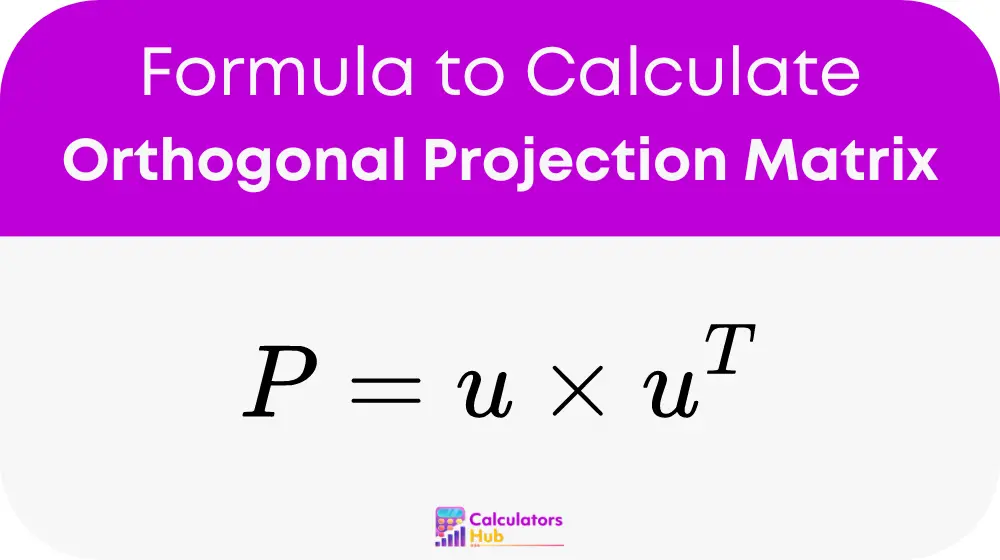An Orthogonal Projection Matrix is essentially used to depict a vector projected onto a subspace, which results in a vector that is orthogonal to the subspace’s complement. This functionality is critical in simplifying the complexities involved in high-dimensional vector projections, making the calculator an indispensable tool for students, engineers, and researchers alike.
Formula for Orthogonal Projection Matrix Calculator
Projecting onto a Unit Vector:
The projection of a vector v onto a unit vector u involves computing a matrix P that transforms v into a new vector that lies on u. The formula to calculate the projection matrix P is straightforward:

Where:
- P is the projection matrix, which will be a square matrix.
- u is the unit vector onto which the vector is being projected (column vector).
- uT is the transpose of the unit vector u (row vector).
Useful Pre-computed Projections
To enhance the utility and efficiency of using the Orthogonal Projection Matrix Calculator, below is a table of pre-computed projection matrices for projecting onto standard basis vectors in both two and three dimensions:
| Vector | Projection Matrix (P) |
|---|---|
| i (2D) | [[1, 0], [0, 0]] |
| j (2D) | [[0, 0], [0, 1]] |
| i (3D) | [[1, 0, 0], [0, 0, 0], [0, 0, 0]] |
| j (3D) | [[0, 0, 0], [0, 1, 0], [0, 0, 0]] |
| k (3D) | [[0, 0, 0], [0, 0, 0], [0, 0, 1]] |
These matrices can be directly use to project vectors onto the x, y, or z axes, significantly reducing the computation time and effort required.
Practical Example of Orthogonal Projection Matrix Calculator
Let’s consider the vector v = [2, 3] and we want to project it onto the unit vector u = [1, 0]. Using the formula for P:
P = [[1, 0], [0, 0]]
The projected vector v’ is calculated as:
v’ = P * v = [[1, 0], [0, 0]] * [2, 3] = [2, 0]
This result demonstrates that the projected vector v’ = [2, 0] lies completely along the x-axis, which aligns with our unit vector u.
Most Common FAQs
An orthogonal projection matrix helps in reducing the dimensions of a vector by projecting it onto a subspace. This reduction is pivotal in various applications such as noise reduction, feature extraction in machine learning, and simplifying complex calculations in engineering.
To calculate an orthogonal projection matrix, identify the unit vector you want to project onto, compute its transpose, and use the formula P = u * u^T. This matrix will help project any vector onto your chosen unit vector efficiently.
Yes, the principles of orthogonal projection apply universally, whether in two-dimensional or higher-dimensional spaces. The calculator can thus be extend to accommodate any number of dimensions. Providing a versatile tool for mathematical and engineering calculations.